Last updated on 22 June 2024
Situated in the rocks of the picturesque valley of the river Rusenski Lom, the Basarbovo Monastery is the only active monastery in Bulgaria. It’s a place that is rich in history, nature, and mysticism. A place that brings out the spirituality in you and brings you that sound feeling of peace.

Although it was established at the time of the Second Bulgarian Empire in the 12th century, the monastery only became famous in the 17th century, after the death of Saint Dimitar Basarbovski who was a monk living a quiet and peaceful life in the rocks of the monastery.
The monastery complex
The Basarbovo Monastery consists of residential buildings, a rock church and premises, and a bell tower. A well-kept and beautifully landscaped yard surrounds the buildings at the foot of a sheer rock face. The buildings are new, built in Revival style. The path, which leads people to the monastery, passes through an archway gate to reach the beautiful green inner yard and ends at a well that was dug by the monk Dimitar himself. Locals believe that water from the well has healing properties.
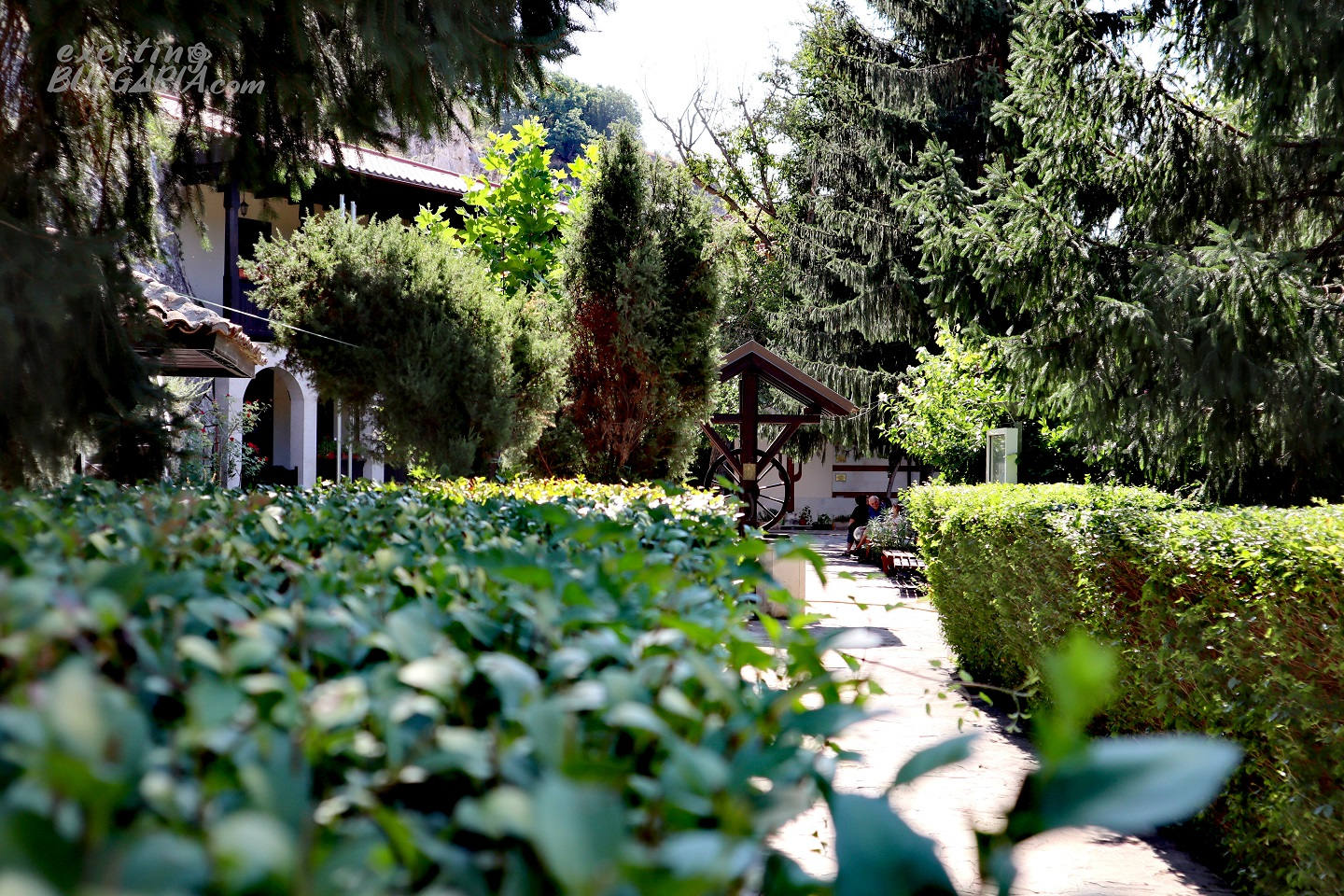
To reach the rock church and the monastery’s shelters, you must climb 48 stairs, but once you reach the caves, the view will make you forget about the tiredness. First you can get to a platform with a niche, where the most famous monk of the monastery slept – Dimitar from the nearby village of Basarbovo.
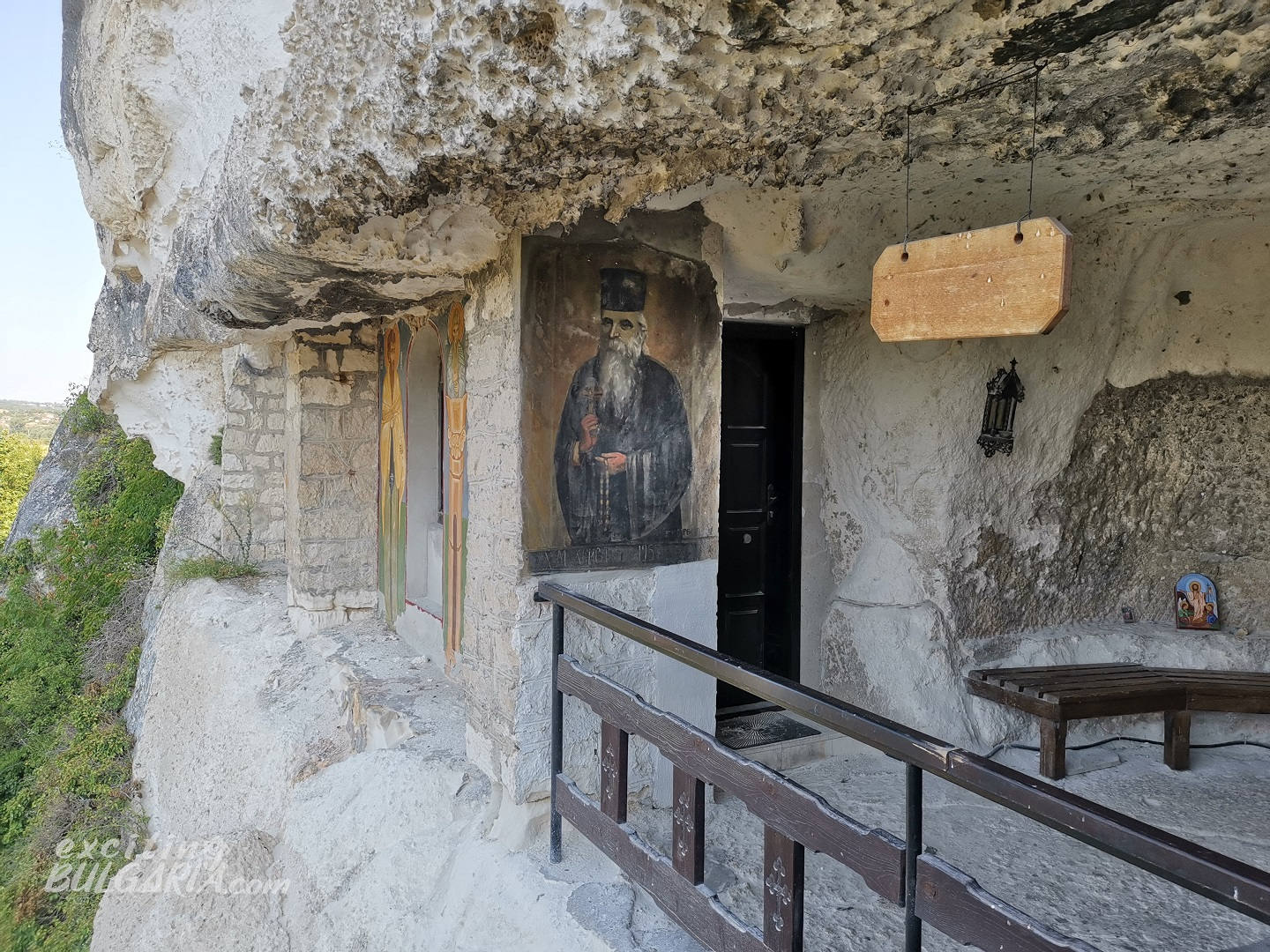
Totally carved into the rock, the rock church has a rectangular plan and measures 4.5 x 8.6 m. The eastern portion of this church has a semicircular apse. There is an entrance to the temple from the west. Its southern wall was built of stone during the restoration of the monastery in the 1930s.
On other stone steps you can reach a cave-tomb where another famous monk, Father Hrisant was buried. He was the one who revived the battered monastery in the 1930s. It is located on the level of the rock church. In the past, the bones of the deceased monks of the monastery were placed in the room next to it but some years ago they were buried in the monastery cemetery. Now the cave is a bone-vault that hosts a museum exhibition.
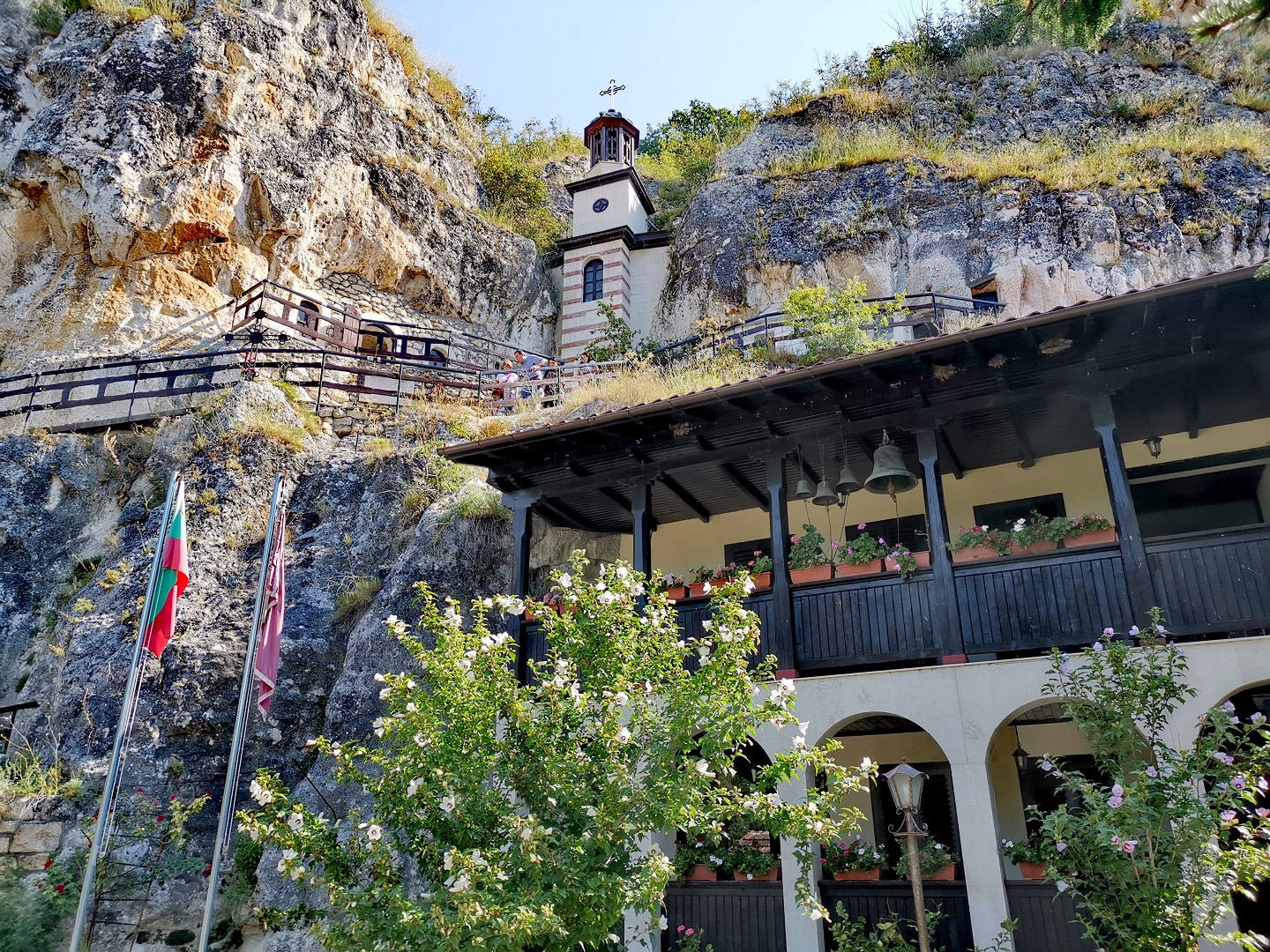
If you look carefully at the rocks, you will notice fossils of seashells. This is because the monastery is carved into limestone – a sedimentary rock type that primarily forms at the bottom of oceans.
History
During the Second Bulgarian Kingdom (12th-14th centuries), hundreds of rock monasteries rose in the Rusenski Lom River valley and its tributaries. One of those was the Basarbovo Monastery. It is believed that the greatest flourishing of the rock monasteries in Bulgaria in the 14th century was associated with hesychasm – the tradition of contemplative prayer, a current in Orthodox Christianity in which monks sought union with God through intense prayer and meditation.
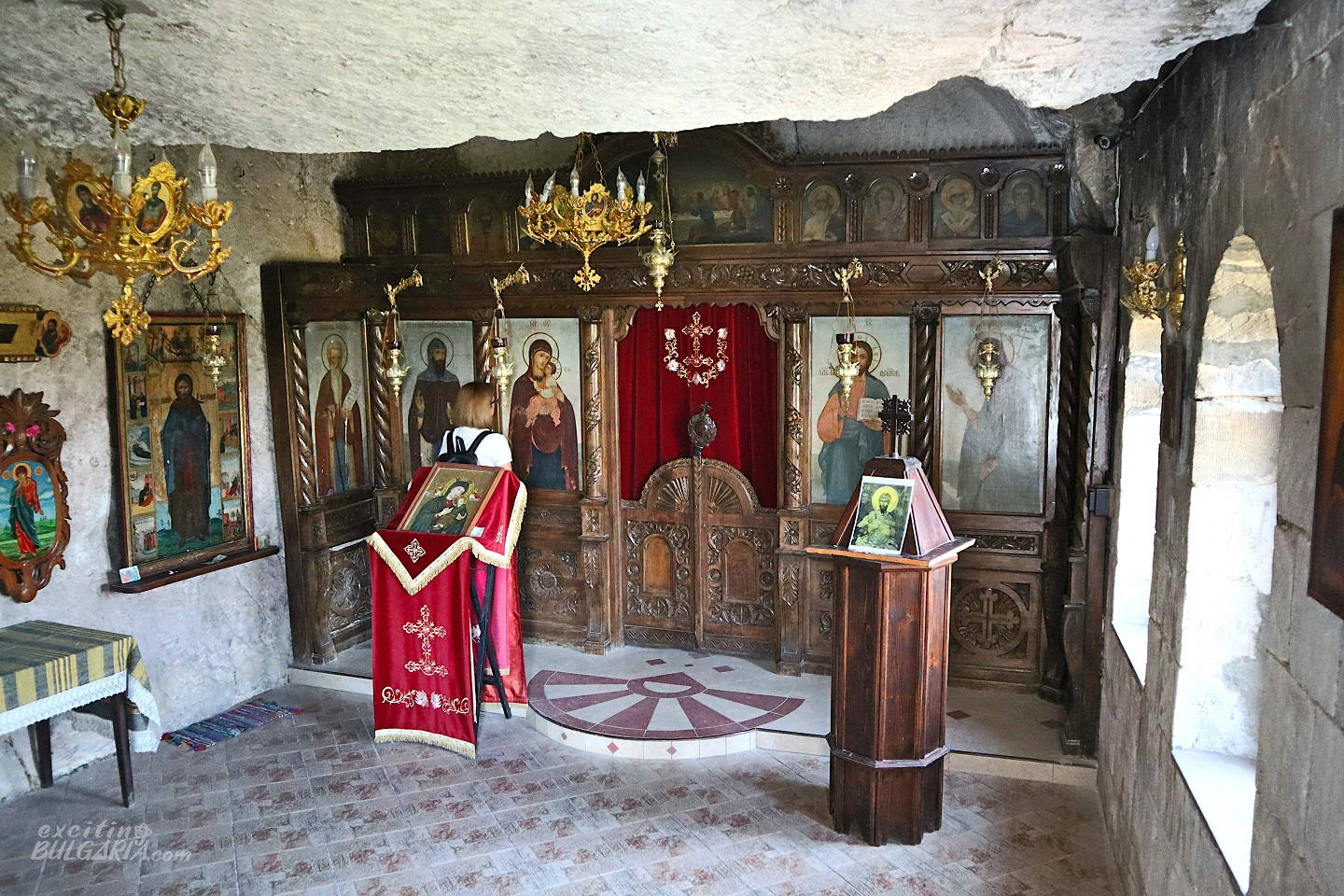
When Bulgaria fell under Ottoman rule at the end of the 14th century, the monasteries were repeatedly attacked and looted. This led to their gradual decline or, at best, they continued to operate with only a few monks. The fate of the monastery in Basarbovo was similar.
The earliest historical evidence for the existence of the monastery dates back to the 15th century. Turkish tax register documents from 1431 mention it.
Scientific research in the 20th century revealed evidence of life and spiritual activity in the caves of the rock monastery – interesting medieval artwork depicting deer, horsemen, horses and other subjects.
Nowadays, this is the only actively functioning rock monastery in Bulgaria. The patronage of the church is celebrated every year on October 26th.
Legends
According to the legend, Dimitar appeared in a dream to a blind girl from the village after the river swept and drowned him. In this dream Dimitar revealed the exact location of his body. After the girl told about her dream, the monk’s relics were found intact and even fragrant.
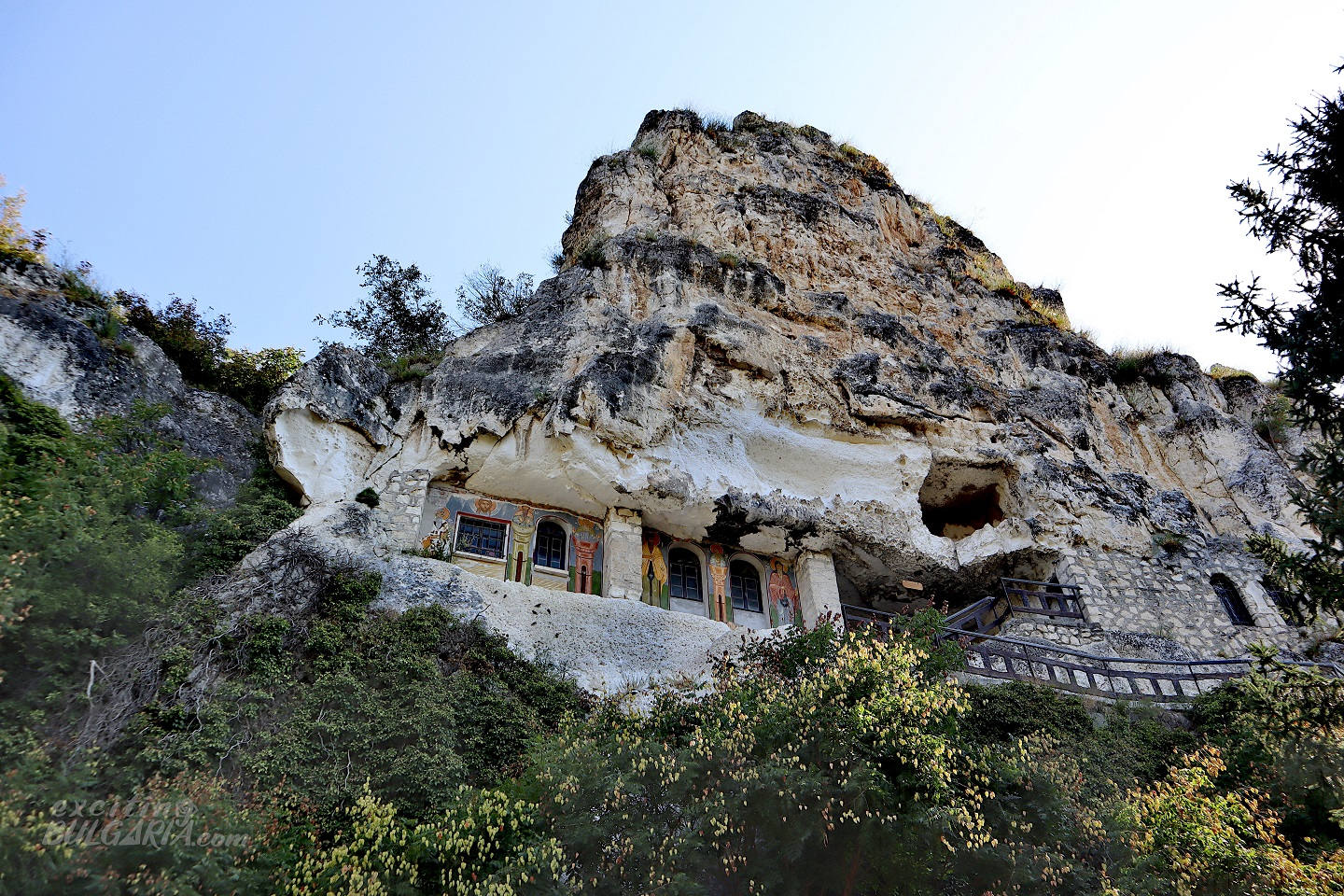
Another legend is related to historical events and explains why the monastery is an attractive place for tourists from Romania. In 1774, after winning the Russo-Turkish War of 1768-1774, General Saltykov bowed to the saint and arranged with the monastery to move his body to Russia. On the way through Romania, where the plague was raging at the time, the sick suddenly stopped dying and all attributed this to the presence of the holy relics. Residents of Bucharest begged the general to keep the relics in the city. Today they lie in a silver coffin in the Sts. Constantine and Elena Church in Bucharest and the saint was declared the patron saint of the Romanian capital.
How to get to the Basarbovo Monastery
Basarbovo Monastery (or Rock Monastery St. Dimitar Basarbovski, BG: Басарбовският манастир „Свети Димитър Басарбовски“) is easily accessible by car. It is located in the valley of the river Rusenski Lom near the village of Basarbovo, about 10 kilometers south of Ruse and about 100 kilometers north of Veliko Tarnovo. There is a small parking at the entrance of the monastery but there is a much bigger parking area on the right side of the road after you pass the complex. Parking is free of charge.
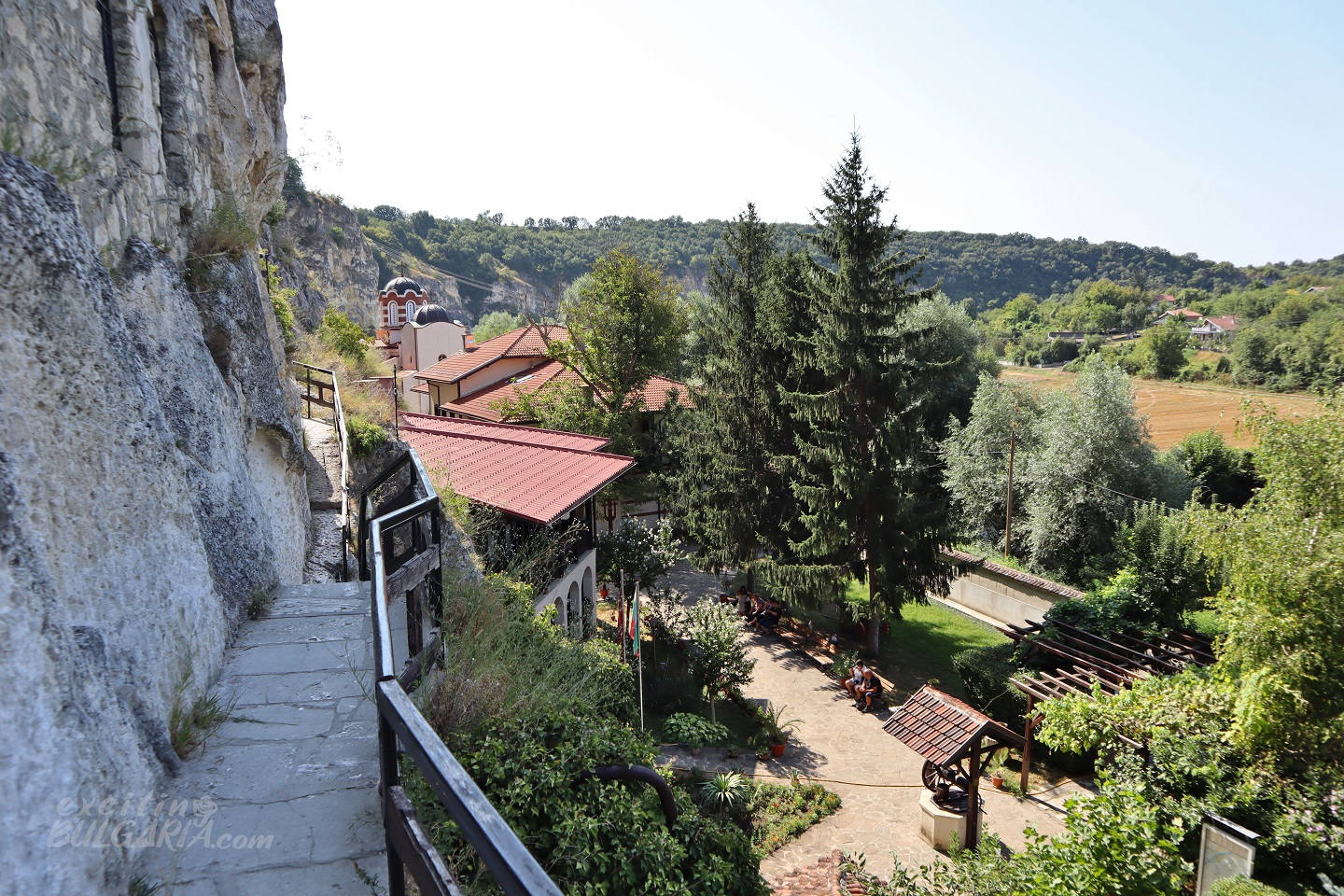
You’ll need to pay the entrance fee of 4 BGN to visit the monastery.
It is advisable to bring your own food and drink to the monastery as there are no shops nearby for food or snacks. The Basarbovo Monastery does not provide accommodation to visitors within the premises but there are many hotels in Ruse that offer good accommodation at reasonable charges.
What to see nearby
There are many things to see around the Basarbovo Monastery. The fabulous city centre of Ruse is only 15 minutes away while the Ivanovo Rock Hewn Churches (UNESCO World Heritage Site), the Cherven fortress and the Orlova Chuka Cave are all within an hour by car.